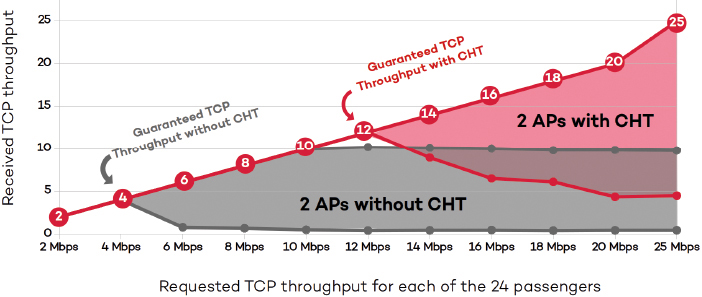Reliable on-board Wi-Fi: Reality or just a dream?
Posted: 20 March 2019 | Galgus | No comments yet
Train manufacturers and system integrators now request reliable, fast, secure and easy-to-use wireless access to serve the modern passenger of today.


Modern carriages are fully equipped with a set of comfortable features, but nowadays passengers are expecting seamless internet access and multimedia interactive services.
Consequently, train manufacturers and system integrators request reliable, fast, secure and easy-to-use wireless access to serve thousands of passengers each day.
In a modern train, two types of services are expected:
- Embedded interactive screens on each seat: The passenger does not need to carry any device to enjoy latest movies and series, music and videogames
- BYOD (bring your own device), where passengers may use their own tablets, smartphones or laptops to connect to the internet.
Therefore, it should not be surprising that the number of connected devices within a train carriage is usually two or three times the number of seats. The deployed solutions need to be able to give a reliable and fast service to 100-150 devices; guaranteeing quality of service (QoS) and a minimum number of APs.
Galgus has created Cognitive HotspotTM Technology (CHT), an embedded software that brings intelligence to any Wi-Fi network. Its software can be installed onto any AP or wireless router. So, after studying the number and density of clients, the type of traffic and the radio environment, our engineers determined the following:
- Small carriages (less than 50 seats) require only one AP equipped with CHT to serve all passengers
- In big carriages (up to 75 seats) two APs are recommended for an improved user experience; supporting up to 150 simultaneous device connections.
Real-world performance metrics show when using other Wi-Fi solutions in train carriages, with only one AP, they are not able to serve concurrent multimedia content to the required number of passengers. As soon as 18-20 passenger devices request 1Mbps video streaming goodput falls below 97.5 per cent. However, only one AP equipped with CHT is able to satisfy the same traffic demand for up to 90 passenger devices.
This is achieved with only one AP with CHT embedded software. Two cognitive APs with CHT share information and jointly optimise the network. Passenger devices, which receive sufficient signal strength from both APs, are fairly distributed among the four radios. This promotes a smart use of radio resources and greatly improves the reliability and performance.
In late 2017, Galgus’ scientists and engineers conducted a pilot test on state-of-the-art train carriages. The aim was to assess the performance improvement CHT can offer once installed onto current AP infrastructure. On the same hardware (APs), we compared the TCP throughput, using CHT software, to the TCP throughput using default AP software. Twenty four Wi-Fi clients were distributed in a carriage, all requesting video streaming, via APs with default software, and again, via the same APs with CHT software. These identical experiments showed that APs configured with the default software guaranteed only up to four Mbps (HD video) throughput for its weakest user. APs configured with CHT guaranteed up to 12 Mbps (near-4k video) throughput. This confirmed TCP throughput is the most important KPI (Key Performance Indicator) for train operators, as it sets the QoS that is announced to their passengers. Additionally, we successfully tested smart roaming, with train crew devices, as they move from one carriage to another.


Requested and received TCP throughput
As shown above, TCP throughput (received against requested) from APs, without CHT, to the clients, diverges much earlier, compared to TCP throughput (received against requested) from APs, with CHT, to the clients. There is a three times over improvement on guaranteed TCP throughput. The average data rate is also improved three times over.
Another stress test, conducted at our laboratories, shows that it is easy to double the guaranteed TCP throughput, with just one AP configured with CHT, compared to two standard APs. This doubles performance improvement, achieved with half the hardware, cabling, connectors, points of failure and installation and maintenance time.
Related topics
Big Data, Digitalisation, Infrastructure Developments, Internet of Things (IoT), Passenger Experience/Satisfaction, Technology & Software, Wi-Fi








